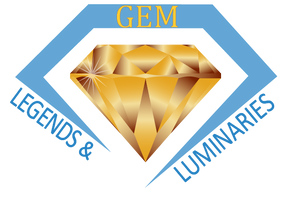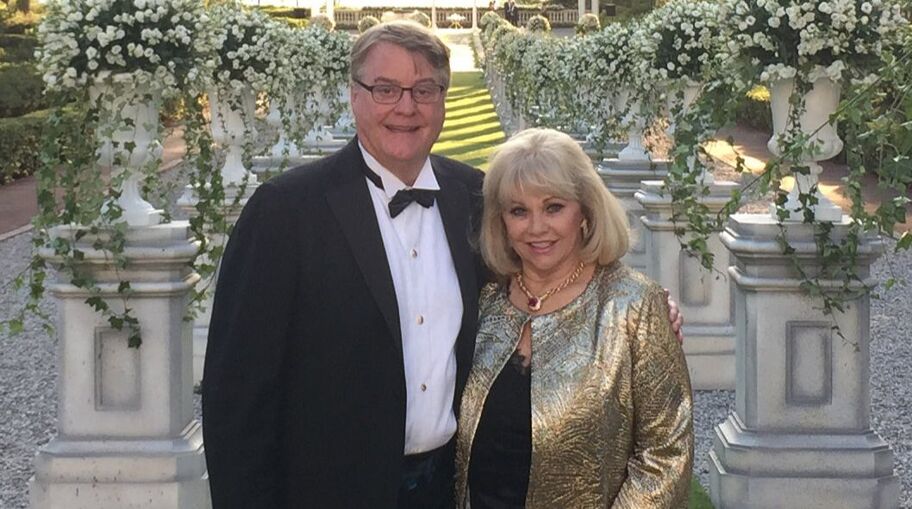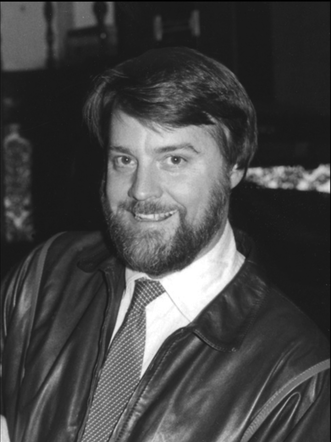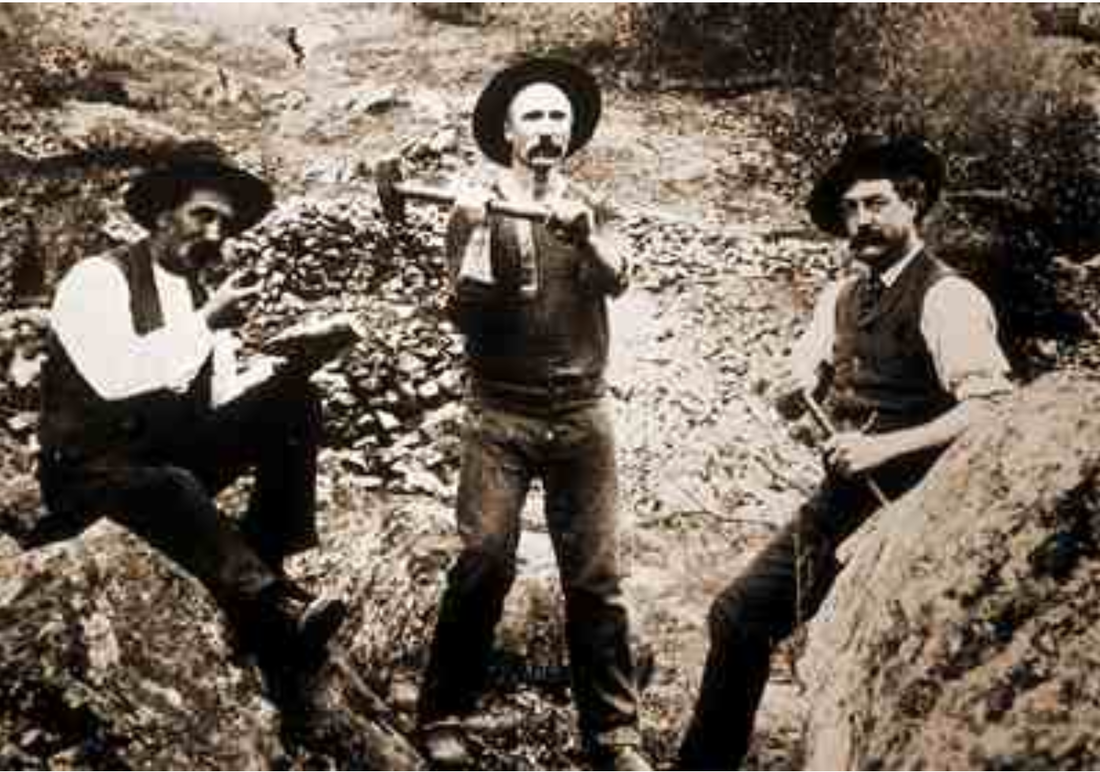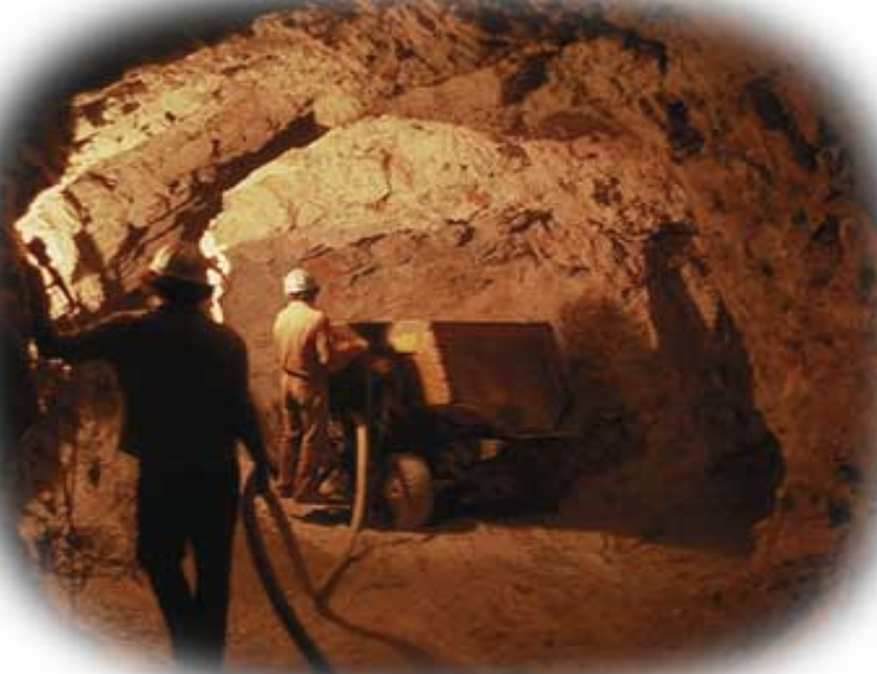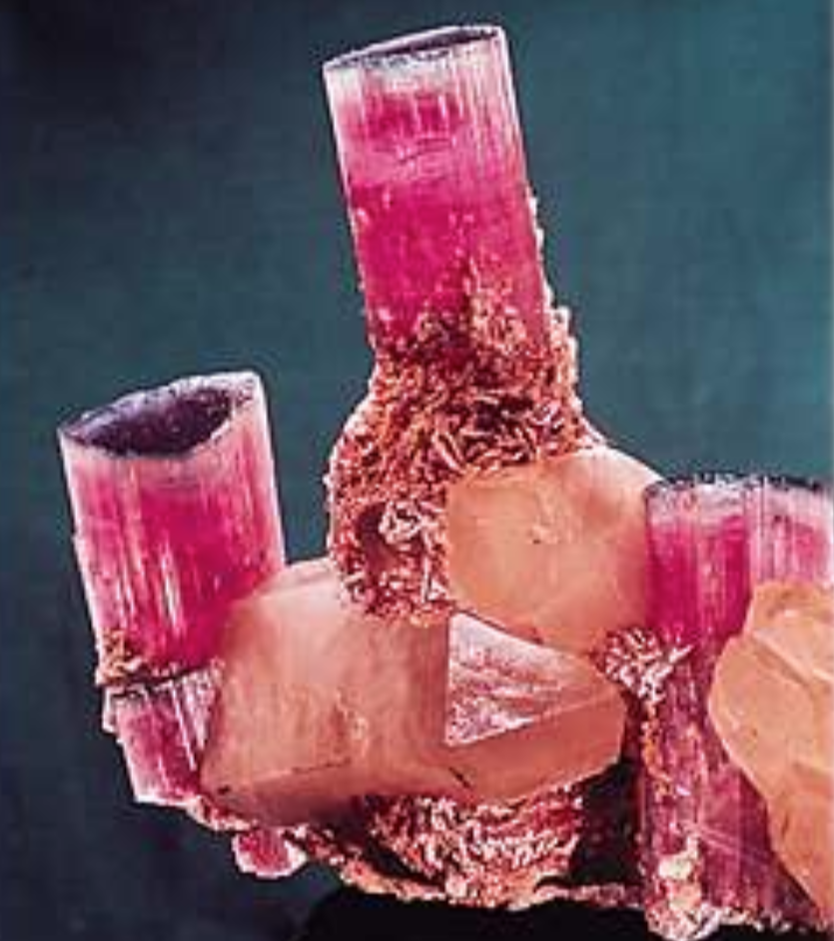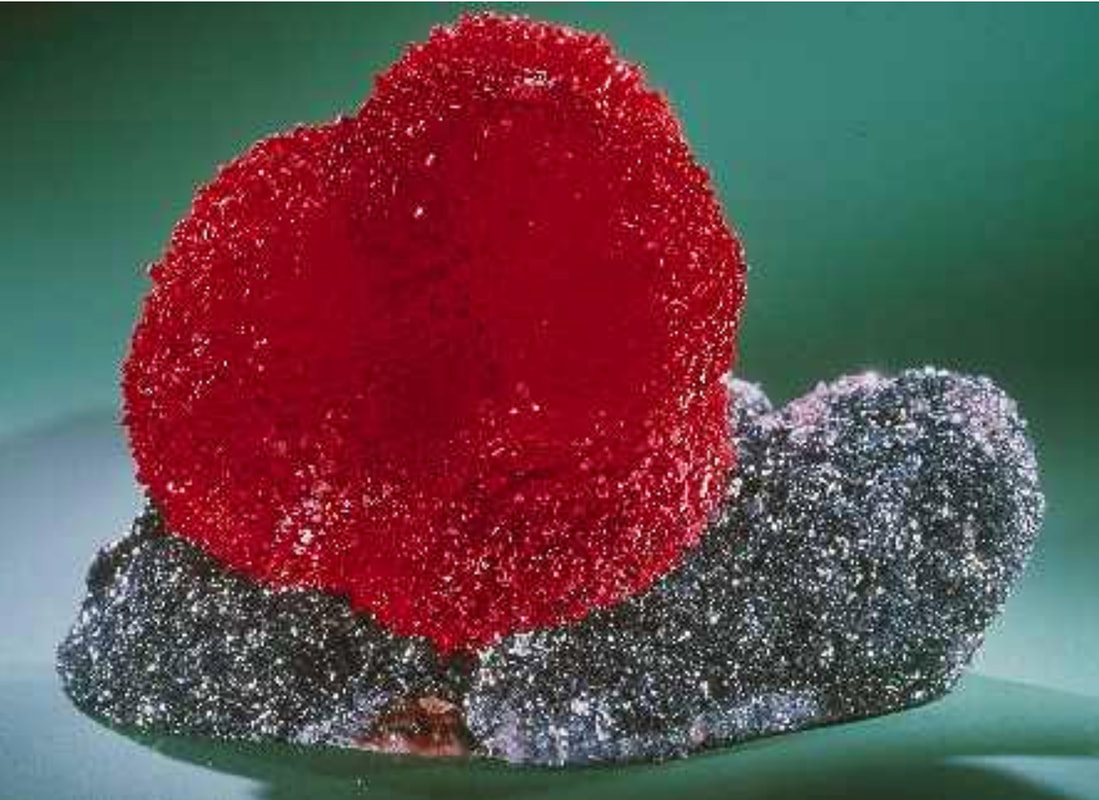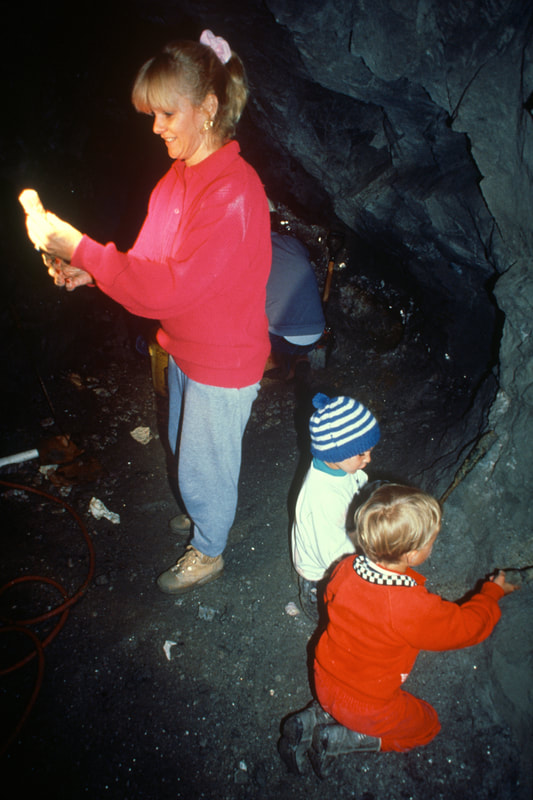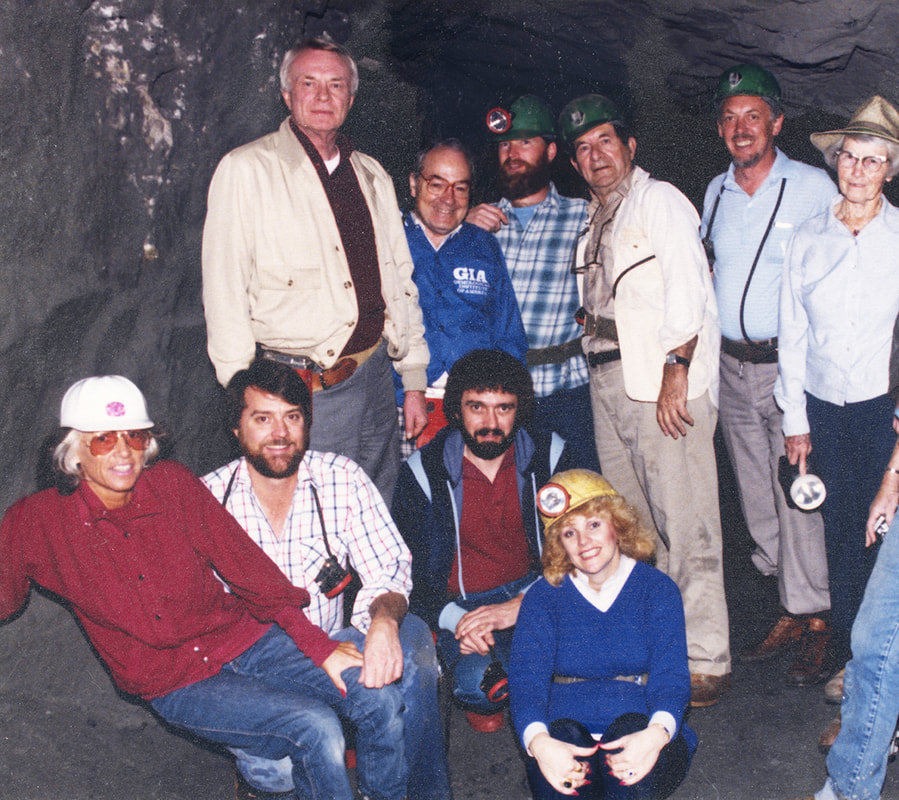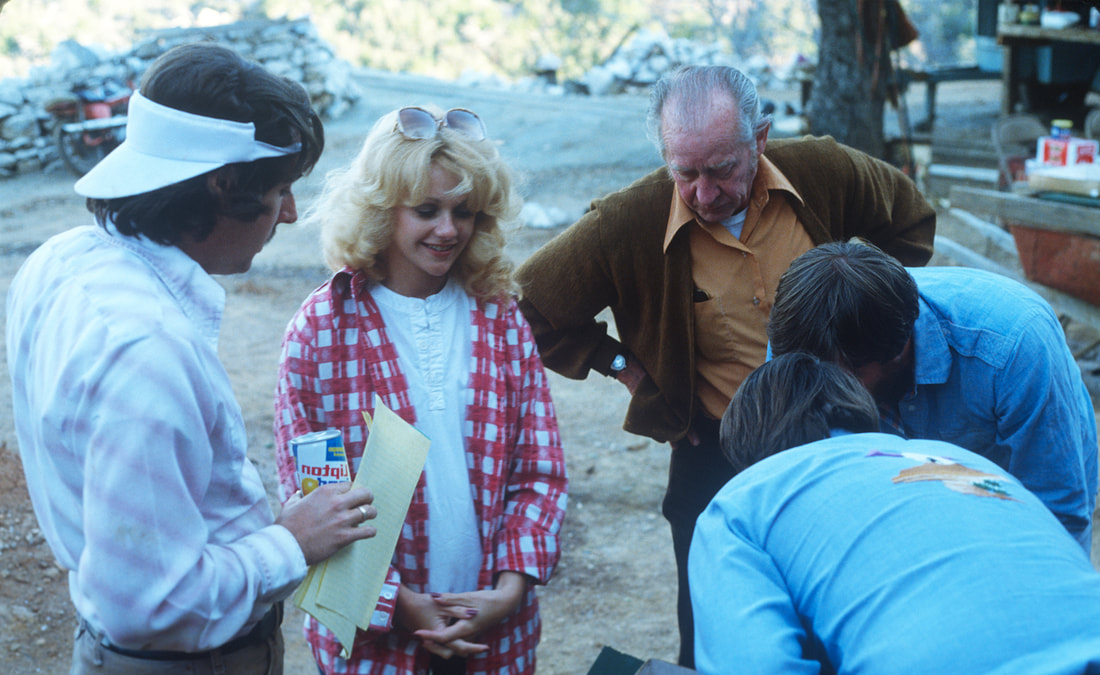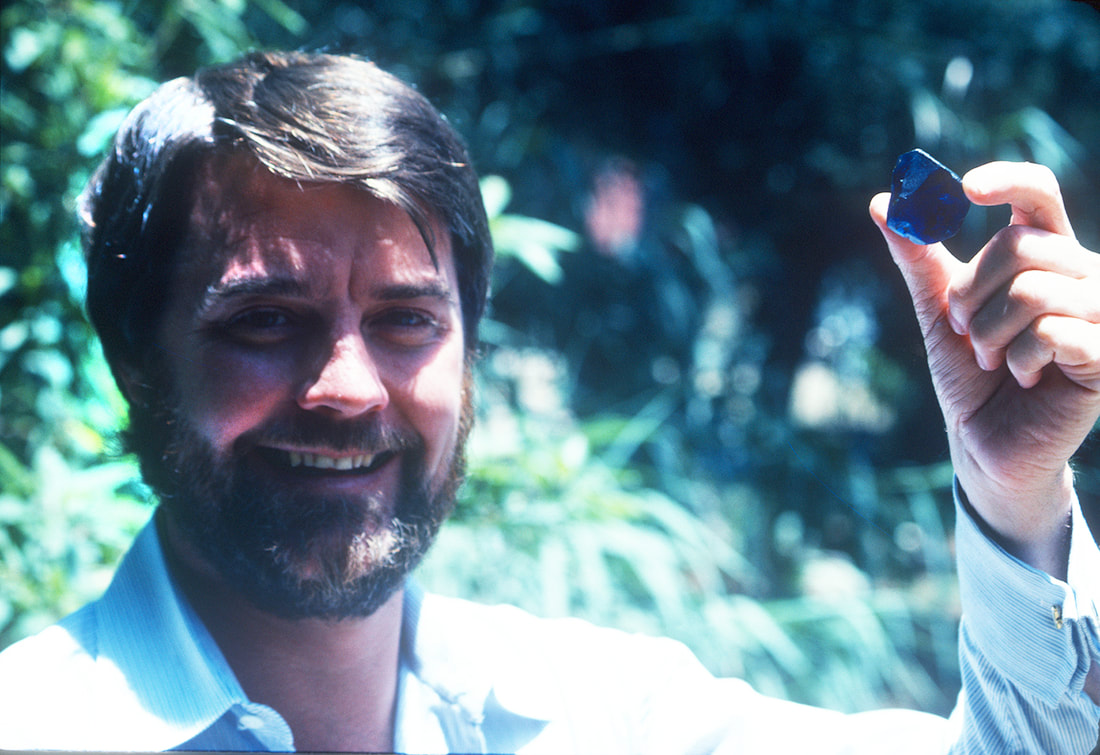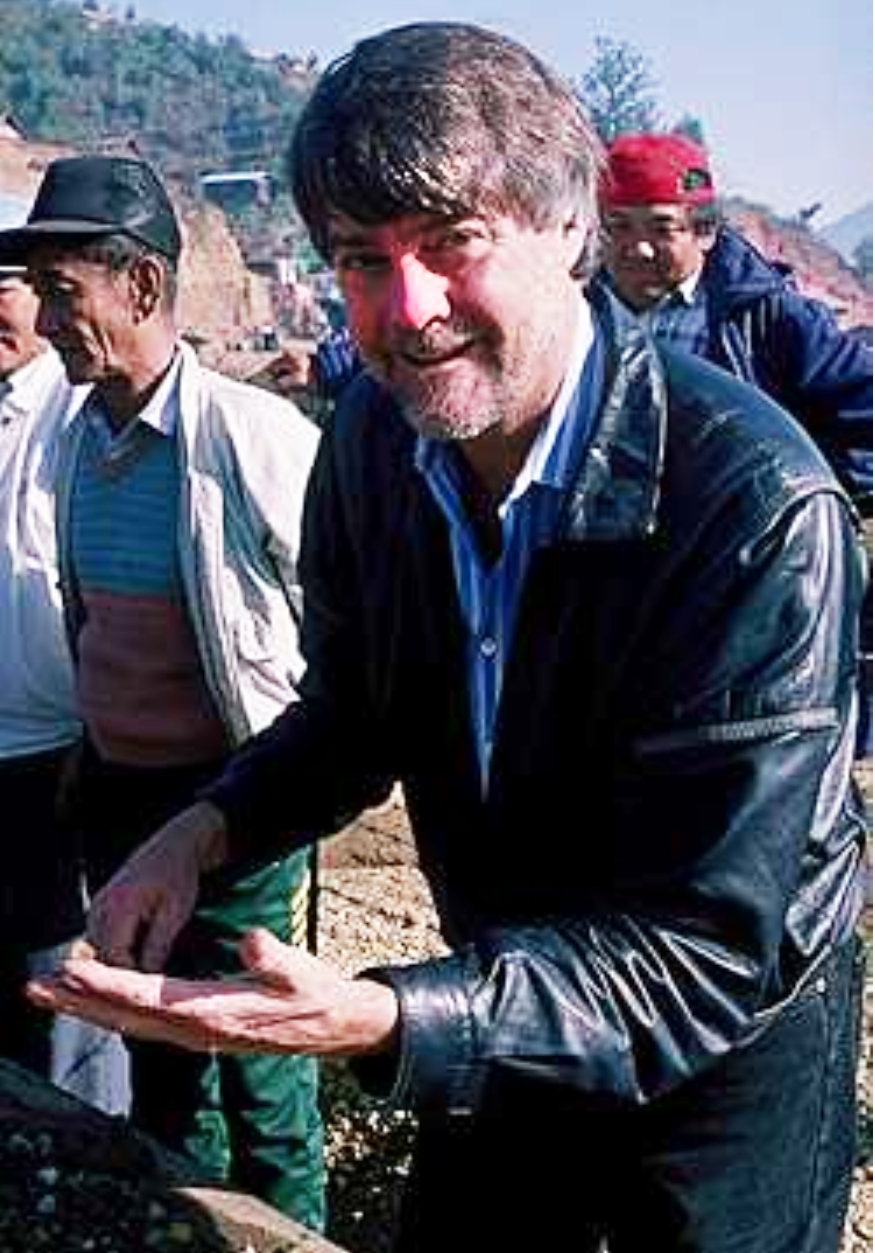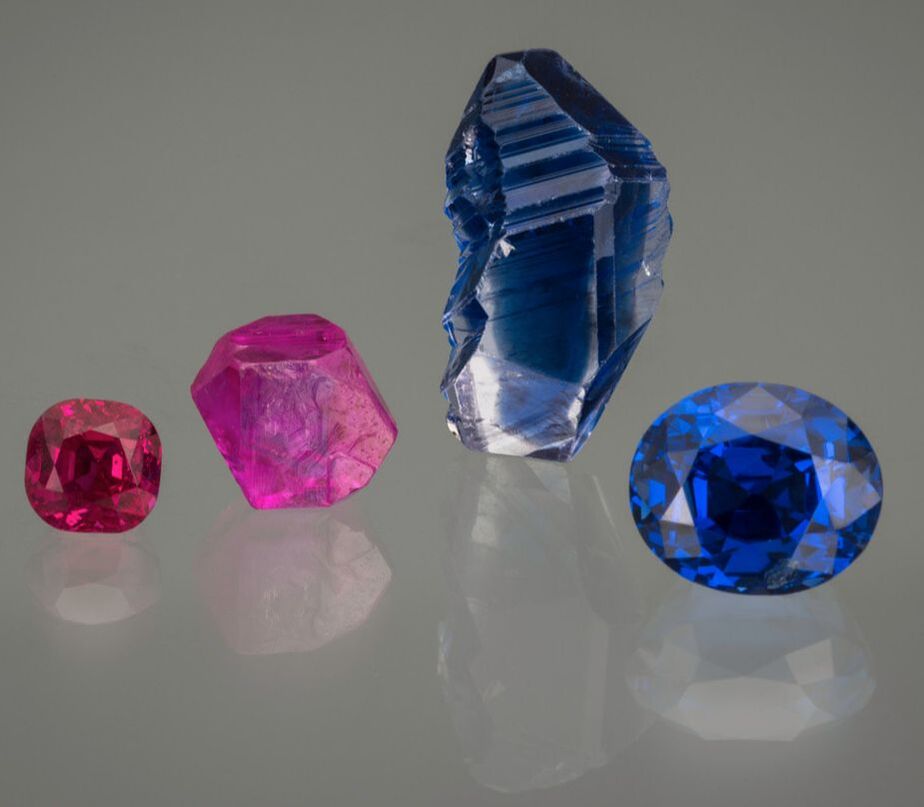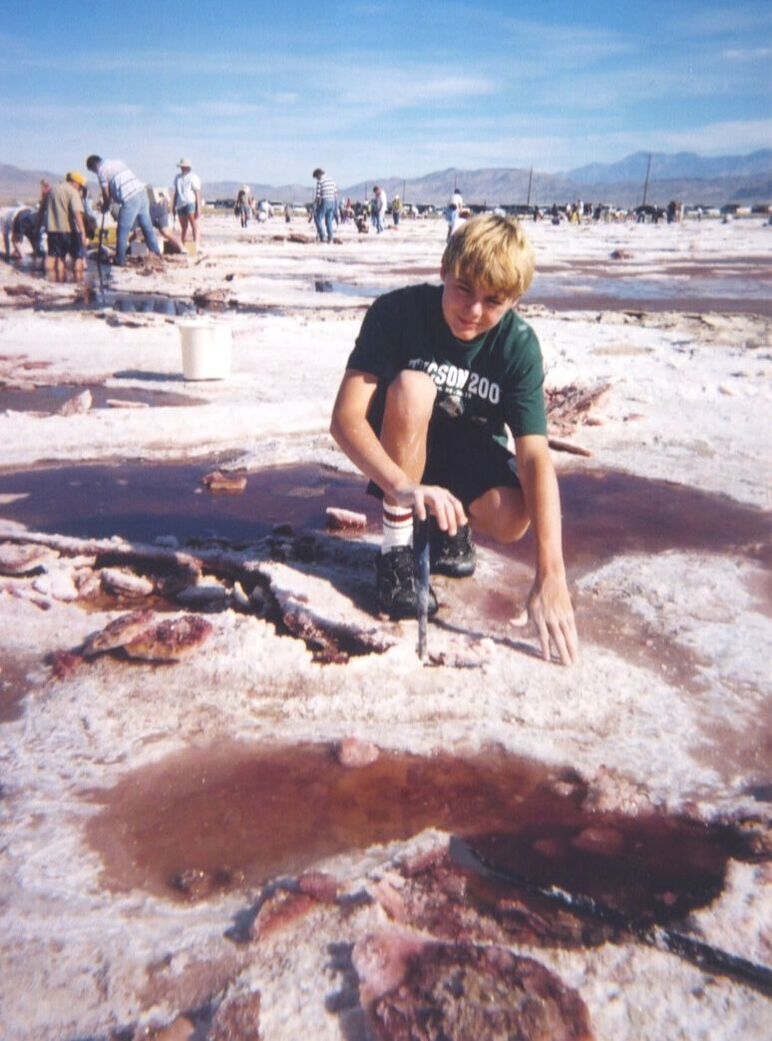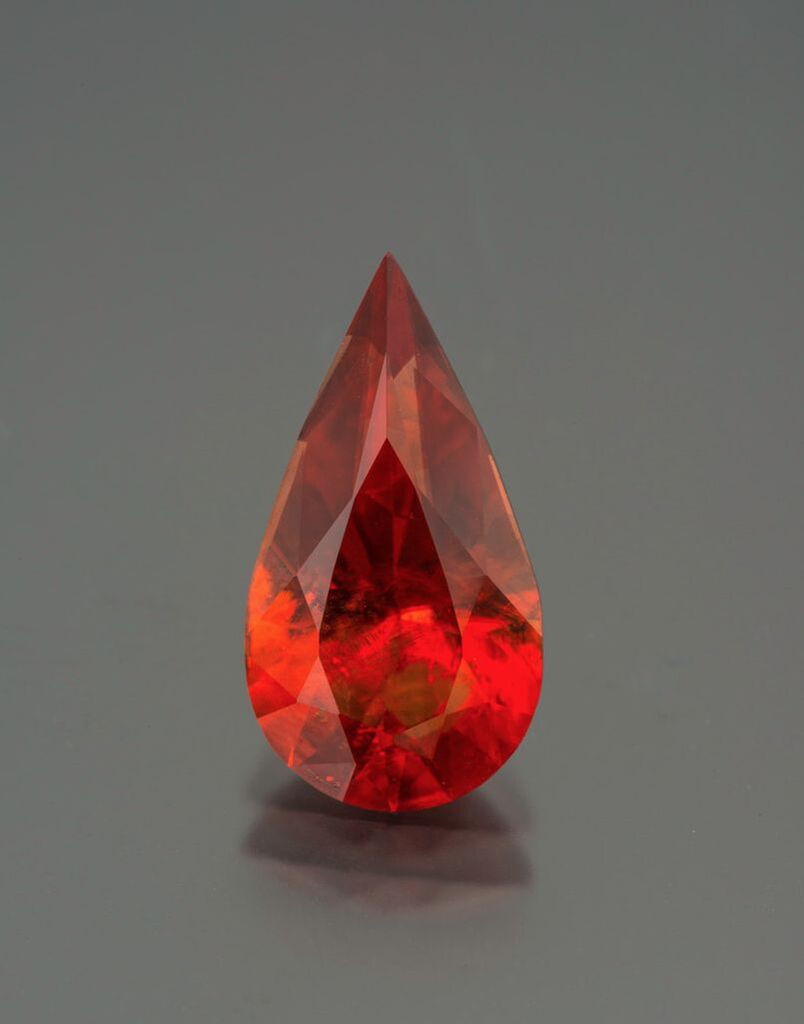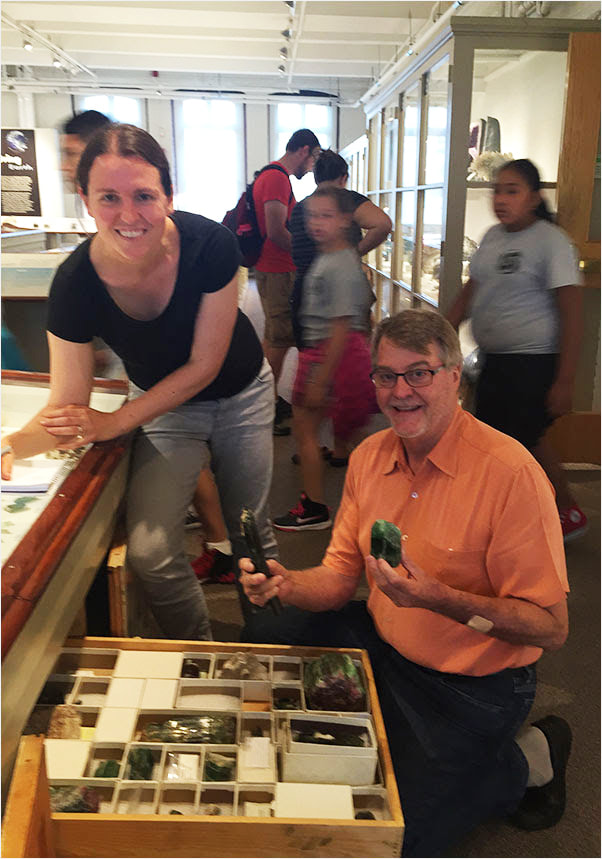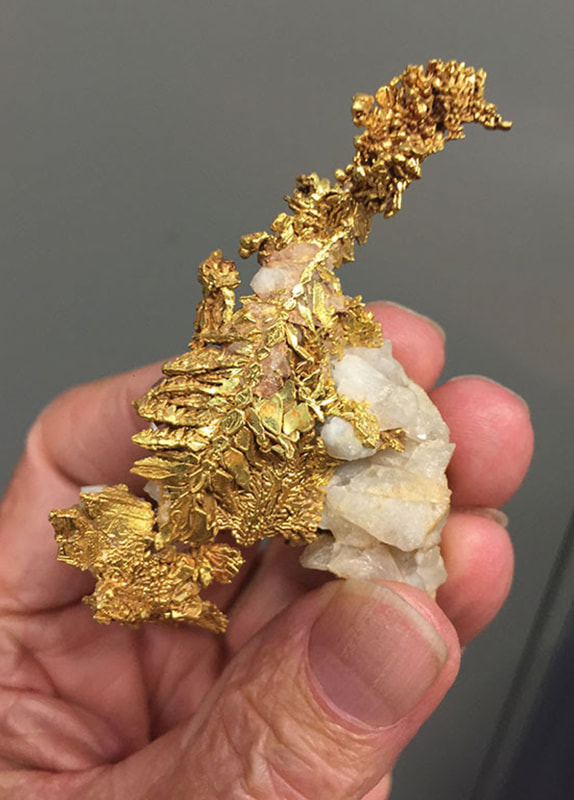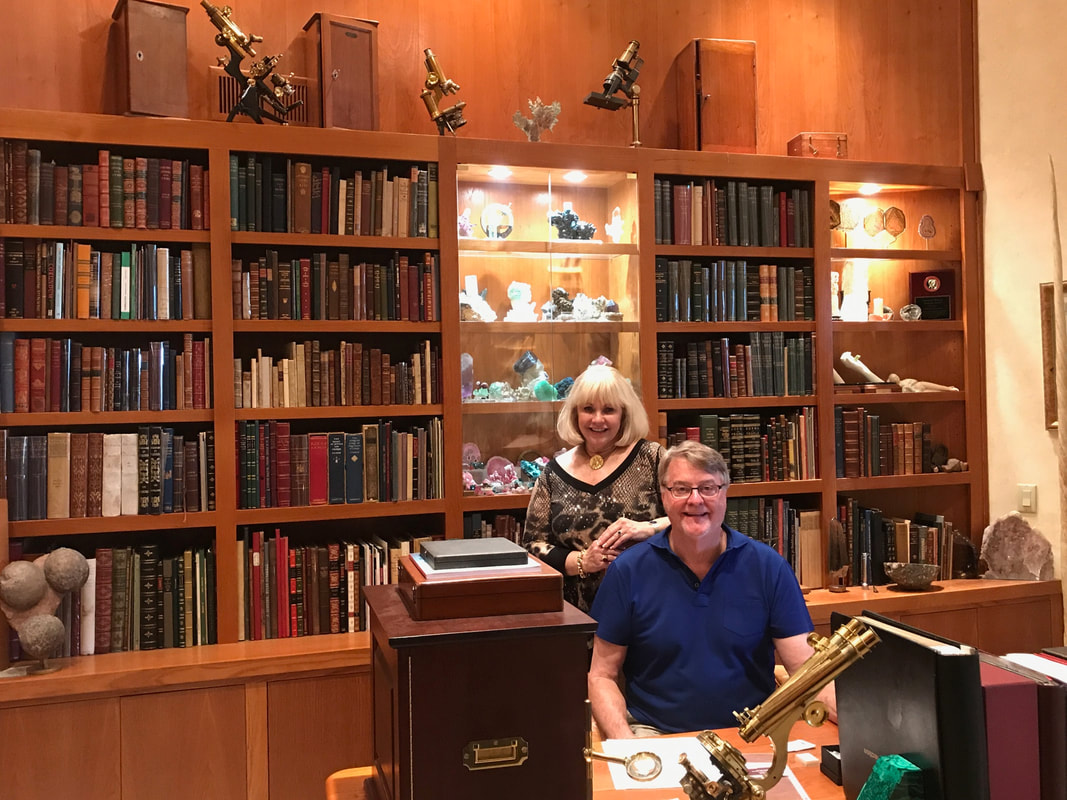William Larson – Unveiling Nature's Beauty
Starting from a small mineral collection when he was a child, Bill Larson has assembled one of the world’s finest private mineral collections and has built Pala International into one of America’s most prominent colored stone houses.
By Cynthia Unninayar
By Cynthia Unninayar
|
|
Life-long passions often begin at an early age. For William Frank “Bill” Larson, born in 1945, his passion for minerals and gems blossomed when he was a young boy growing up in San Diego, California after his family moved to the Golden State from Minnesota. “I developed what became a lifelong fascination with mineral specimens. Enthralled by these small marvels of nature, I had a deep sense of appreciation for the natural beauty of these rare objects found in our Planet Earth,” Bill reminisces. “Mineral collecting is exciting and infectious. It is one of the healthiest pastimes any child could learn. When they learn about Nature, they become good people.”
When he was eight years old, Bill starting combing the hills of San Diego County with his father and some friends, in search of beautiful mineral crystals. By the time he was 13, the teenager went from trading small tourmalines scavenged from local mining dumps to setting off dynamite for some serious treasure hunting. When it was time to go to college, he earned an advanced degree in geological engineering from the Colorado School of Mines with highest honors. While waiting to be drafted into the Army, the young man partnered with Josie Scripps in three successful mining ventures. Josie arranged for leasing the mines and Bill did the work. All three were successful—the Blue Chihuahua Mine for herderite, the Mack Mine for aquamarine and the Little Three Mine for topaz and green tourmaline. Their success attracted Ed Swoboda who offered an opportunity to start a mineral and mining business. Ed had already purchased the Stewart mine in Pala in San Diego County, so he and Bill partnered to create Pala Properties International (PPI) in 1968. When Bill ultimately joined the Army, he spent two years assigned to special services at Fort Ord, teaching lapidary and jewelry making. The company purchased three more gem mines: Tourmaline Queen, Goddess and Pala Chief, located in the foothills of northern San Diego County. These mines were part of local mining history dating back to the late 1800s, when tourmaline accounted for the largest percentage of gemstones mined there. American, European and Asian gem companies were actively involved, including Tiffany’s, which had part-time buyers in the Pala and Mesa Grande mining districts. In 1972, PPI was the only firm actively mining pink tourmaline in North America and, thanks to a spectacular strike that year at the Tourmaline Queen Mine, it became one of the prime sources of tourmaline in the world. It was “the pocket of the century,” says Bill, noting that the deposit was brimming with magnificent rubellite crystals—some with crystals of peach-colored morganite attached to them—which remain among the most unusual and valuable mineral specimens ever found. “That find put us on the map,” he adds. An exceptional piece from that strike was the “Candelabra,” which is now on display at the Natural History Museum in the Smithsonian Institution in Washington, DC. |
|
The Larson family entered the retail business in 1969, with the opening of two stores called “The Collector,” located in Fallbrook and La Jolla, California, which showcased fine gemstones, jewelry, and objets d'art. The Fallbrook store remains open, and is managed by Bill's wife Jeanne, whom he met in 1977.
Bill and Jeanne embarked on a globetrotting, business-and-family relationship. “For six months, I was overwhelmed,” admits Jeanne, by a crash course in the intricacies of Bill’s business. “I still keep learning aspects of it to this day. It’s fascinating. What made it even more so was to see what happens underground. It is unbelievable that nature has created such exquisite sculpture. And sometimes to be the first to unveil it after many millions of years…” In 1985, the couple announced of the birth of their first child, William, and then Carl joined the family in 1988. Between school and other obligations, the young children traveled with their parents to the far reaches of the planet. “If you don’t travel, you don’t come across new finds,” notes Bill. Both children later became involved with the family business. William Jr (Will) now runs the mineral side of Pala International, doing shows yearly in Sainte Marie in France and Munich in Germany as well as in Tucson and Denver. Carl manages the gemstone business. He received his Graduate Gemologist degree in 2013 from the Gemological Institute of America and also studied and assisted curating the gem collection of the Muséum National d’Histoire Naturelle in Paris, broadening his knowledge and experience. In 1980, Bill bought out his partner, mainly with the three mines, and leased the Himalaya Mine in Mesa Grande, some 75 miles from San Diego. They had to drill approximately 700 feet of tunnel through hard rock, which was denser than that of previous projects before intersecting the pegmatite. Pockets of tourmaline were hit almost immediately, and one contained nearly 1000 pounds of crystals and rough. Bill developed new techniques for this type of drilling, which allowed safe removal of the tourmaline and other associated minerals. While putting in over 14,000 feet of underground tunnels, Pala actively mined the Himalaya Mine until August 1998. During this time, Bill was dealing more with gems on an international scale and soon became one of the world’s leading firms. The company was subsequently renamed “Pala International.” In addition to Pala’s lapidary activities and the Himalaya Mine and other California deposits, it was also involved in mining operations in many countries, including Mexico, Sri Lanka, Kenya, Tanzania and especially Russia for demantoid. Besides its own mining activities, Pala sought out the finest gems possible from other dealers. “The only way to sell quality, is to buy quality,” he declares. During his extensive travels around the globe, Bill’s passport shows more than 100 trips to Europe, 40 to Africa and more than 150 to Asia. When Bill first visited the Mogok mining area in Burma (Myanmar), he noted that all crystals were cut, even those that were beautiful but not gem quality. So he took hundreds of books to Myanmar to educate them about the crystals. Poor quality rough could be very valuable as a crystal, but worth very little if cut. Over the years and his 35-plus trips to this storied land, many Burmese dealers understood what Bill was trying to teach them. Today, beautiful crystals from Myanmar are available, and Bill is affectionately called the “father of the mineral business in Burma.” It wasn’t long before he became recognized the world over as an expert on precious minerals and stones. And, for six years in the 1990s, he was called upon to serve on the board of the San Diego Natural History Museum, as well as on numerous boards of organizations in the gemstone field. Pala was also a founding member of the International Colored Gemstone Association (ICA) and the American Gem Trade Association (AGTA). In high demand as an authority on stones and gemstone jewelry, Bill was also asked to make appraisals and evaluations. In 2003, he was asked to appraise “Swiss gemologist Eduard Gübelin's collection, one of the world's finest,” he smiles. Harvard University came calling in 2013 to have him appraise the gemstone collection of its Mineralogical and Geological Museum. Two years later, Bill was asked to return and do the same for the mineral collection. “Any avid mineral enthusiast would realize that the opportunity to work with these pieces is an amazing experience and an honor. Going into the project, I knew that not only would I get to hold the great ‘Ground Hog Mine’ gold wire, but I would be refreshing and expanding my own knowledge on rare and classic localities.” Aside from the family gem business, Bill also collects stones and crystals for himself. His personal collection is considered by many experts to be one of the finest ever assembled. His finds are represented in more museums and featured in more publications worldwide than he can count, including the American Museum of Natural History and the Smithsonian Institution in Washington DC. “These rare natural creations are my passion, among the greatest loves of my life. For the gems I buy, sell and collect, I want those formed by Nature,” insists Bill, adding somewhat philosophically, “Gemstones whose supply is subject to human ingenuity rather than Mother Nature are common. Such stones, therefore, have only the value that humans are willing to put on them. Yes, all gems are fashioned by man, but what happens when man’s handiwork extends not just to smoothing out surface imperfections with grit and grinding wheel, but also literally to redecorating the atomic grid? The sublime beauty of Nature is thus lost.” While his globetrotting in search of these miracles of Nature can be exhilarating in many ways, it also has a perilous side. One of these incidents occurred in Sri Lanka. “I was in a hotel, watching Catch 22, when I was lifted eight inches off the bed by a bomb that had gone off outside the hotel. It took every window out of the hotel and killed two people.” He was safe, but it brought home some of the dangers in an uncertain world. What is certain, though, is that Bill loves both gems and minerals. He does, however, recognize the divide between these two worlds in the minds of most jewelers and rockhounds. “This division should end,” he comments. “As a miner, I’m as much on the lookout for fine mineral specimens as for fine gem rough for cutting,” he explains. “Both are miracles that unveil Nature’s beauty.” |
All images are courtesy of Pala International unless otherwise specified.
|
